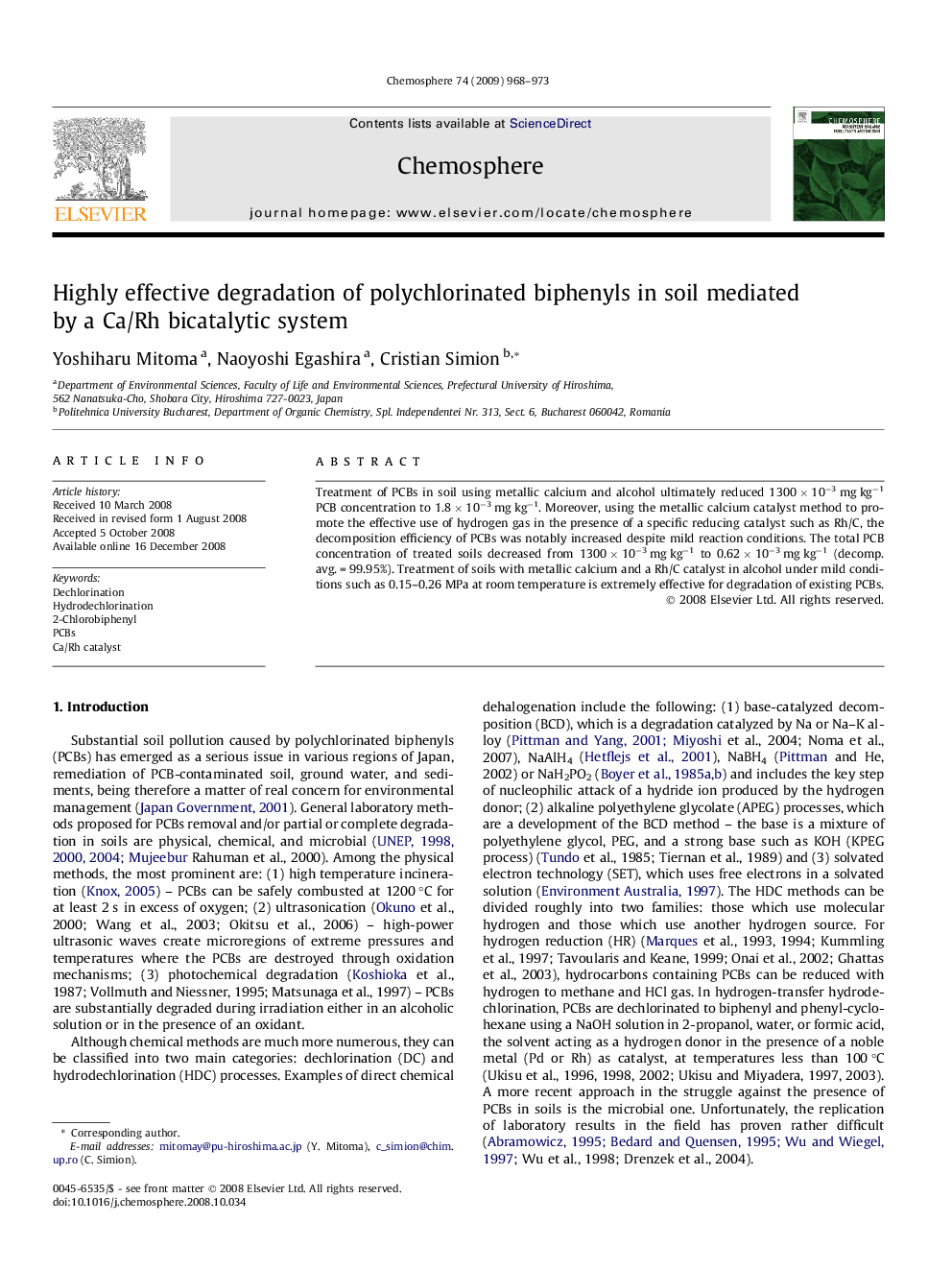| Article ID | Journal | Published Year | Pages | File Type |
|---|---|---|---|---|
| 4413511 | Chemosphere | 2009 | 6 Pages |
Abstract
Treatment of PCBs in soil using metallic calcium and alcohol ultimately reduced 1300 × 10−3 mg kg−1 PCB concentration to 1.8 × 10−3 mg kg−1. Moreover, using the metallic calcium catalyst method to promote the effective use of hydrogen gas in the presence of a specific reducing catalyst such as Rh/C, the decomposition efficiency of PCBs was notably increased despite mild reaction conditions. The total PCB concentration of treated soils decreased from 1300 × 10−3 mg kg−1 to 0.62 × 10−3 mg kg−1 (decomp. avg. = 99.95%). Treatment of soils with metallic calcium and a Rh/C catalyst in alcohol under mild conditions such as 0.15–0.26 MPa at room temperature is extremely effective for degradation of existing PCBs.
Related Topics
Life Sciences
Environmental Science
Environmental Chemistry
Authors
Yoshiharu Mitoma, Naoyoshi Egashira, Cristian Simion,
